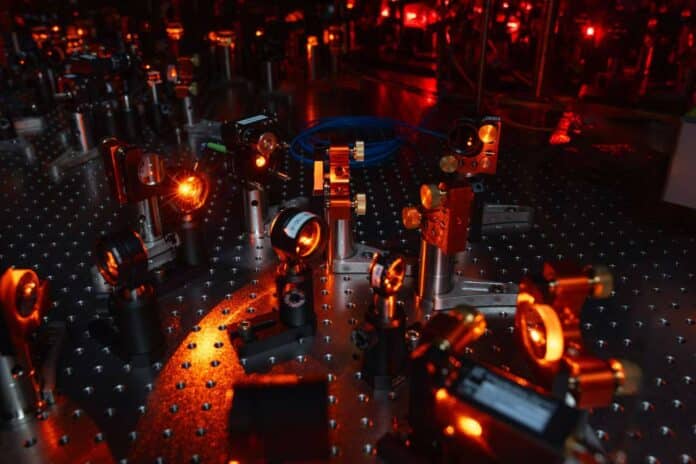Entanglement is essential for quantum applications such as quantum information processing, simulation, and quantum-enhanced sensing. With their intricate internal structure and interactions, molecules have been suggested as a potential platform for quantum science. However, achieving deterministic entanglement of individually controlled molecules has posed a persistent experimental challenge.
In a significant achievement, a group of physicists from Princeton has successfully linked individual molecules, creating quantum mechanically “entangled” states. In these peculiar states, the molecules remain correlated and can interact simultaneously, maintaining their connection even if they are separated by miles or at opposite ends of the universe.
Lawrence Cheuk, an assistant professor of physics at Princeton University, said, “This is a breakthrough in the world of molecules because of the fundamental importance of quantum entanglement. But it is also a breakthrough for practical applications because entangled molecules can be the building blocks for many future applications.”
Connor Holland, a graduate student in the physics department and a co-author of the work, said, “One of the motivations in doing quantum science is that in the practical world, it turns out that if you harness the laws of quantum mechanics, you can do a lot better in many areas.”
Molecules had long defied controllable quantum entanglement. Through careful manipulation in the laboratory, scientists found a way to control individual molecules and coax them into these interlocking quantum states.
Scientists believed that molecules, as opposed to atoms, offered specific advantages that made them well-suited for certain applications in quantum information processing and quantum simulation of complex materials. Compared to atoms, molecules possess more quantum degrees of freedom and can interact in novel ways, making them advantageous for specific quantum applications.
Yukai Lu, a graduate student in electrical and computer engineering and a co-author of the paper, said, “What this means, in practical terms, is that there are new ways of storing and processing quantum information. For example, a molecule can vibrate and rotate in multiple modes. So, you can use two of these modes to encode a qubit. If the molecular species is polar, two molecules can interact even when spatially separated.”
Despite their potential advantages, molecules have been challenging to control in the laboratory due to their complexity. The very features that make them appealing also make them difficult to corral or manipulate in controlled settings. To overcome these challenges, scientists conducted a meticulously designed experiment using an advanced experimental platform called a “tweezer array.” This system involved picking up individual molecules using a complex arrangement of tightly focused laser beams, often called “optical tweezers.”
Cheuk said, “Using molecules for quantum science is a new frontier, and our demonstration of on-demand entanglement is a key step in demonstrating that molecules can be used as a viable platform for quantum science.”
“The fact that they got the same results verifies the reliability of our results. They also show that molecular tweezer arrays are becoming an exciting new platform for quantum science.”
Journal Reference:
- Connor Holland, Yukai Lu, and Lawrence Cheuk. On-demand entanglement of molecules in a reconfigurable optical tweezer array. Science. DOI: 10.1126/science.adf4272
